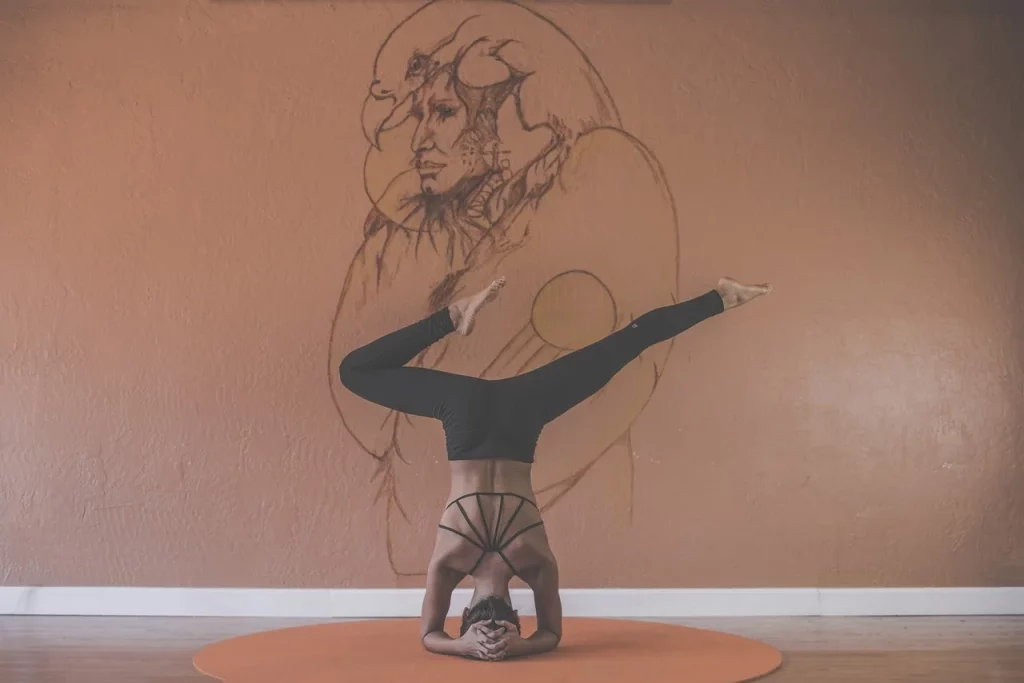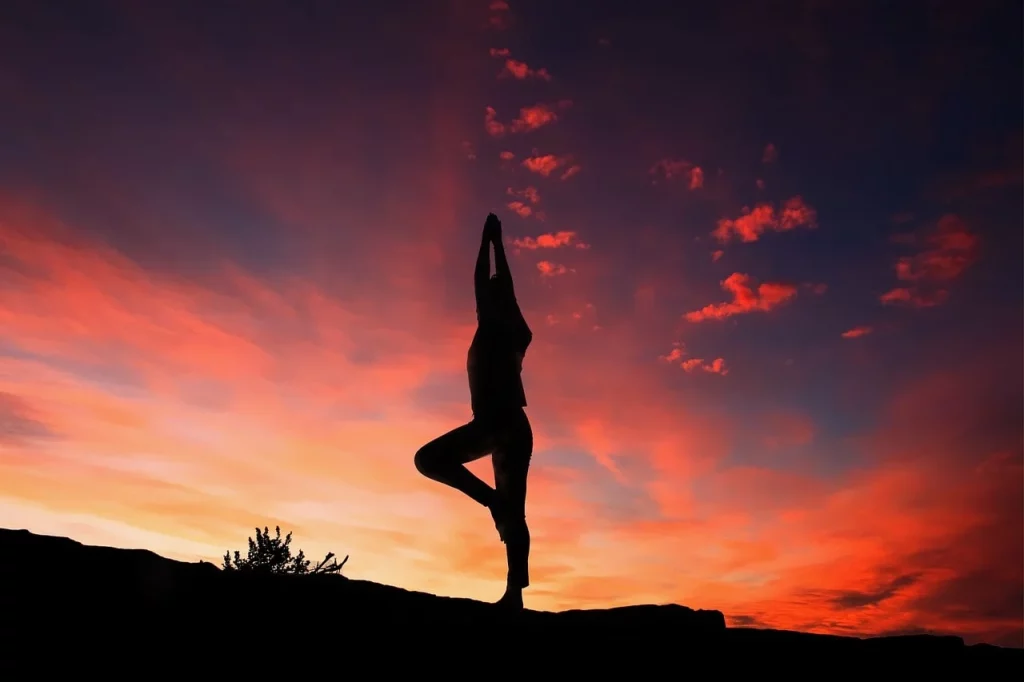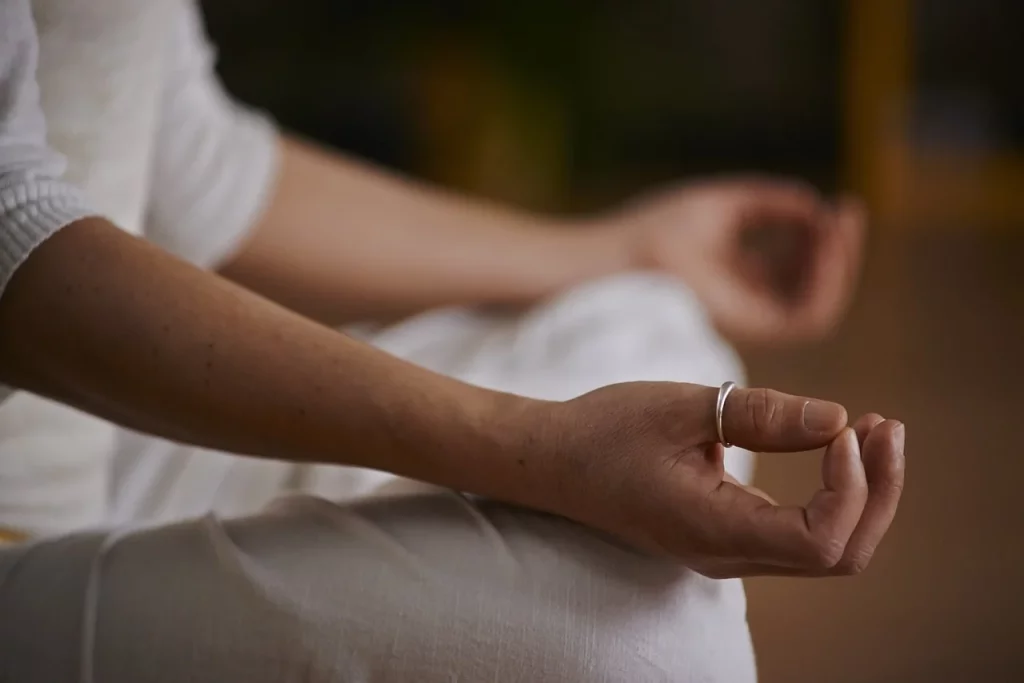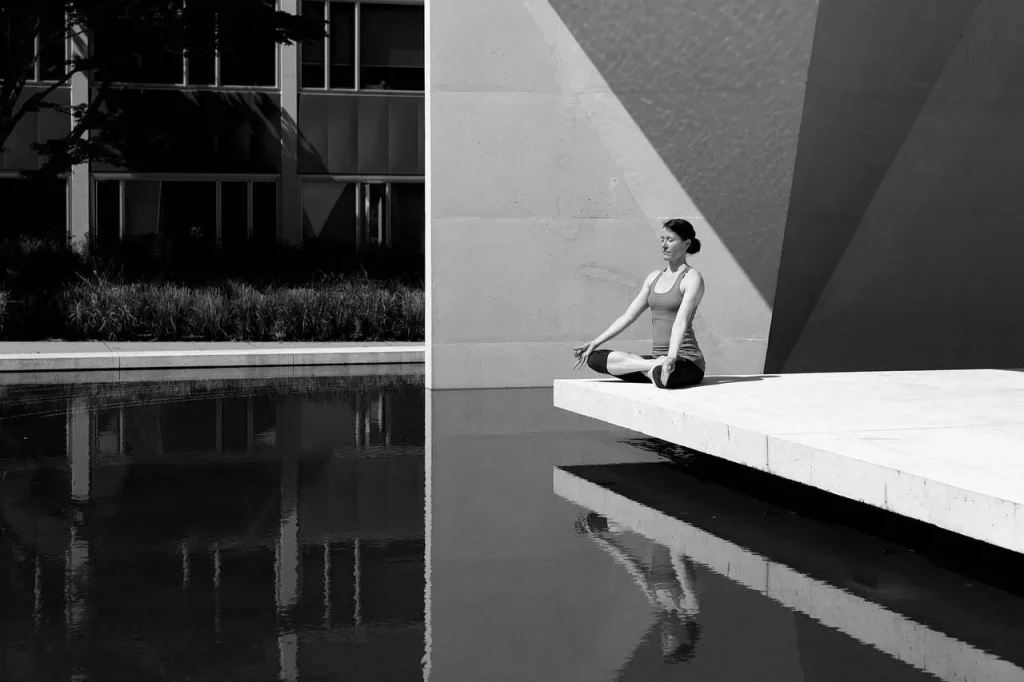Are you curious about how yoga can change your life? It is a holistic practice that combines physical poses, controlled breathing, and meditation to promote physical and mental well-being. But there’s a lot more to yoga than meets the eye.
I bring you some interesting facts about yoga, providing insights into its ancient traditions, surprising health benefits, and why it might just be the perfect addition to your daily routine.
Yoga is the journey of the self, through the self, to the self.
The Bhagavad Gita
Yoga Facts
Before we dive into the enlightening world of yoga, take note: a quiz awaits at the end of this article. Pay close attention to each fact to showcase your expertise. Don’t disappoint me.
- The origins of this ancient practice trace back over 5,000 years in Northern India.
- Historians found evidence in the Indus Valley civilization suggesting its early existence.
- The word itself means union in Sanskrit, symbolizing the unity of mind, body, and spirit.
- The Bhagavad Gita, written around 500 BCE, is one of the first texts to outline its principles.
- Practitioners can increase their gray matter volume in areas associated with stress regulation through regular practice.
- It wasn’t until the late 19th and early 20th centuries that this practice found its way into the Western world.
- The first dedicated studio in the United States opened in Hollywood in 1947.
- NASA has studied its effects on astronauts to counteract the health degradation experienced in microgravity.
- There are more than 100 different styles, ranging from gentle to physically demanding.
- The longest yoga marathon lasted 139 hours and was set by an Indian woman in 2021.
- A session can burn between 180 and 460 calories, depending on the style and intensity.
- Practicing three times a week can significantly reduce the risk of heart disease.
- Studies suggest that it can alter gene expression, particularly in immune cells.

- The oldest known poses are depicted on the coins of the Kushan Empire.
- In traditional texts, there are 84 classic asanas described, but today there are thousands.
- Ancient practitioners were renunciates who left worldly possessions to pursue spiritual liberation.
- The practice can increase serotonin levels, enhancing mood and overall well-being.
- It’s considered one of the six Āstika (orthodox) schools of Indian philosophical traditions.
- The lotus position, or Padmasana, is traditionally used for meditation for its stability and breath control enhancement.
- Animals, especially dogs and cats, naturally perform some of the poses in their stretching routines.
- Practicing can lead to a significant decrease in cortisol levels, the primary stress hormone.
- The world’s largest class was attended by 100,984 participants in India.
- Some styles use props like straps and blocks to assist in poses, making them accessible to beginners and those with physical limitations.
- The five principles include proper relaxation, exercise, breathing, diet, and positive thinking and meditation.
- A Yogic diet is lacto-vegetarian, designed to enhance the overall practice and promote a purified body.
- Therapeutic approaches can specifically target anxiety and depression, offering a natural way to manage these conditions.
- Tirumalai Krishnamacharya, known as the father of modern yoga, taught some of the most influential teachers.
- The eight limbs, outlined in the Yoga Sutras, provide a moral and ethical guideline towards achieving the ultimate goal of unity.

- Regular practice improves flexibility, strength, balance, and endurance.
- It can also enhance cardiovascular health by lowering blood pressure and improving circulation.
- International Yoga Day is celebrated on June 21st, marking its global significance.
- The practice encourages a mindful eating habit, promoting a healthier relationship with food.
- Face yoga is a series of exercises aimed at tightening and toning the facial muscles to reduce signs of aging.
- Ancient yogis believed that one could control their life force, or prana, through specific breathing techniques.
- The concept of chakras, or energy centers in the body, plays a crucial role in understanding its holistic effects.
- It’s been used as a form of rehabilitation in prisons, helping inmates manage stress and aggression.
- The Gheranda Samhita describes seven types of purification practices to prepare the body for higher practices.
- Research has shown its effectiveness in managing chronic pain, including lower back pain.

- Some advanced practitioners can control their heart rate and body temperature through meditation and breathing exercises.
- The Yoga Sutras, written by Patanjali around 400 CE, are considered the foundational texts.
- Ayurveda and yoga share a common history and complement each other in promoting health and wellness.
- It can increase one’s self-awareness and bring a deeper sense of peace and contentment.
- Unlike many physical exercises, it emphasizes inner silence and awareness as much as the physical aspects.
- Nadi Shodhana, or alternate nostril breathing, is believed to balance the body and mind.
- It supports joint health by improving flexibility and range of motion.
- Practicing can reduce inflammation in the body, which is linked to several chronic health conditions.
- It can improve sleep quality by promoting relaxation and reducing stress.
- Yogic breathing techniques are used to improve lung capacity and respiratory function.
- Hot yoga, practiced in a room heated to 105°F (40°C), detoxifies the body through profuse sweating.
- The practice encourages compassion and empathy, extending beyond the self to include all beings.
Yoga Myths

We’ve explored all these fun facts about yoga, and now we continue to the next section. Let’s separate the truth from the myth, illuminating the realities of yoga beyond common misconceptions.
- Yoga is Only for Flexible People
It can be enjoyed by anyone, regardless of their flexibility level. It’s often misunderstood that you need to be super bendable to start, but actually, yoga helps to improve flexibility over time. Classes and poses can be adapted to all bodies and flexibility levels. - Yoga Doesn’t Count as a Real Workout
While it might seem gentle compared to high-intensity training, it can be quite challenging and offers a full-body workout. Depending on the style, it can improve strength, balance, and endurance. It’s recognized for its ability to reduce stress and improve mental health as well. - Yoga is Only for Women
It is universally beneficial and is practiced by people of all genders. Historically, it was actually predominantly practiced by men. Today, yoga classes welcome everyone, aiming to provide a holistic approach to physical and mental well-being, irrespective of gender. - Yoga is a Religion
It is not tied to any religion; it’s a spiritual and physical practice. It originated in ancient India with spiritual roots but has evolved into various forms that focus more on physical aspects. People of all faiths and beliefs practice yoga worldwide for its health benefits. - You Need Special Equipment to Practice Yoga
The beauty of yoga is its simplicity. While a mat and comfortable clothing are helpful, they’re not strictly necessary. It can be practiced anywhere, from a park to your living room. It’s about the connection between mind, body, and breath, not the gear.
No products found.
Yoga Quotes

Enjoy the wisdom of yoga through these quotes, exploring its profound impact on the mind, body, and spirit. Feel free to share more in the comments so I can add them to the list.
Yoga is not about touching your toes, it’s about what you learn on the way down.
Jigar Gor
Jigar Gor emphasizes the importance of the process and personal growth in yoga, rather than achieving perfect poses.
The body is your temple. Keep it pure and clean for the soul to reside in.
B.K.S. Iyengar
B.K.S. Iyengar, a pioneering yoga teacher, underlines the importance of physical and spiritual cleanliness through yoga.
Yoga is the perfect opportunity to be curious about who you are.
Jason Crandell
Jason Crandell views yoga as a means for introspection and discovering one’s true self.
The very heart of yoga practice is ‘abyhasa’ – steady effort in the direction you want to go.
Sally Kempton
Sally Kempton speaks to the dedication and consistent practice required in yoga to achieve one’s goals and aspirations.
In truth, yoga doesn’t take time – it gives time.
Ganga White
Ganga White suggests that yoga, rather than being a time-consuming activity, actually helps practitioners manage their time and lives better by instilling a sense of peace and focus.
Yoga FAQ

We are moving on to the FAQ section. Let’s see the answers to some common questions that I found online. Read carefully because the quiz is just ahead.
- Can yoga build muscle?
Absolutely! While it might not pump muscles in the same way weightlifting does, it certainly strengthens and tones them through poses that require you to lift and hold your own body weight. Think of poses like the Chaturanga, Plank, and Warrior series; these are great for building strength in your arms, legs, and core. - Are yoga mats toxic?
This depends on the material of the mat. Traditional PVC mats can contain chemicals that are considered toxic, but there’s a wide array of eco-friendly options made from natural rubber, jute, and organic cotton that are non-toxic and environmentally friendly. Always check the label or product description for the materials used. - Can yoga lower blood pressure?
Yes, it can! Regular yoga practice is known to help reduce stress levels, which in turn can lower blood pressure. Certain poses and breathing exercises promote relaxation and improve circulation, contributing to better overall heart health. - Is yoga good for mental health?
Definitely. It is not just a physical practice but a mental one as well. The meditation and breathing exercises incorporated in yoga can help reduce anxiety, depression, and stress by enhancing mindfulness and promoting a sense of peace and well-being. - How often should I practice yoga?
This really depends on your personal goals and schedule. Even a short daily practice can be beneficial, but if that’s not possible, aim for 2-3 times a week. Remember, consistency is key, so it’s better to practice more frequently for shorter durations than less often for longer sessions.
No products found.
Yoga Trivia

Welcome to our ultimate yoga quiz, where the only thing more flexible than the questions is your future ability to dodge karma if you score a big, round zero. Trust me, you don’t want the universe to do a downward dog on your luck!
Conclusion
Diving into the world of yoga unveils a treasure trove of benefits that touch every aspect of our being, challenging us to grow stronger, more flexible, and increasingly mindful. It’s a practice steeped in history yet as relevant today as ever—a bridge between the physical and the spiritual.
As you continue on your yoga journey, remember that each breath is an opportunity to connect deeper with yourself. Embrace the imperfections and celebrate the small victories. Till next time, stay curious and explore more. Cheers.
3 Sources Used For This Article120 Yoga Quotes – Everyday Power
Evaluating the Impact of Yoga – Yoga Kali


